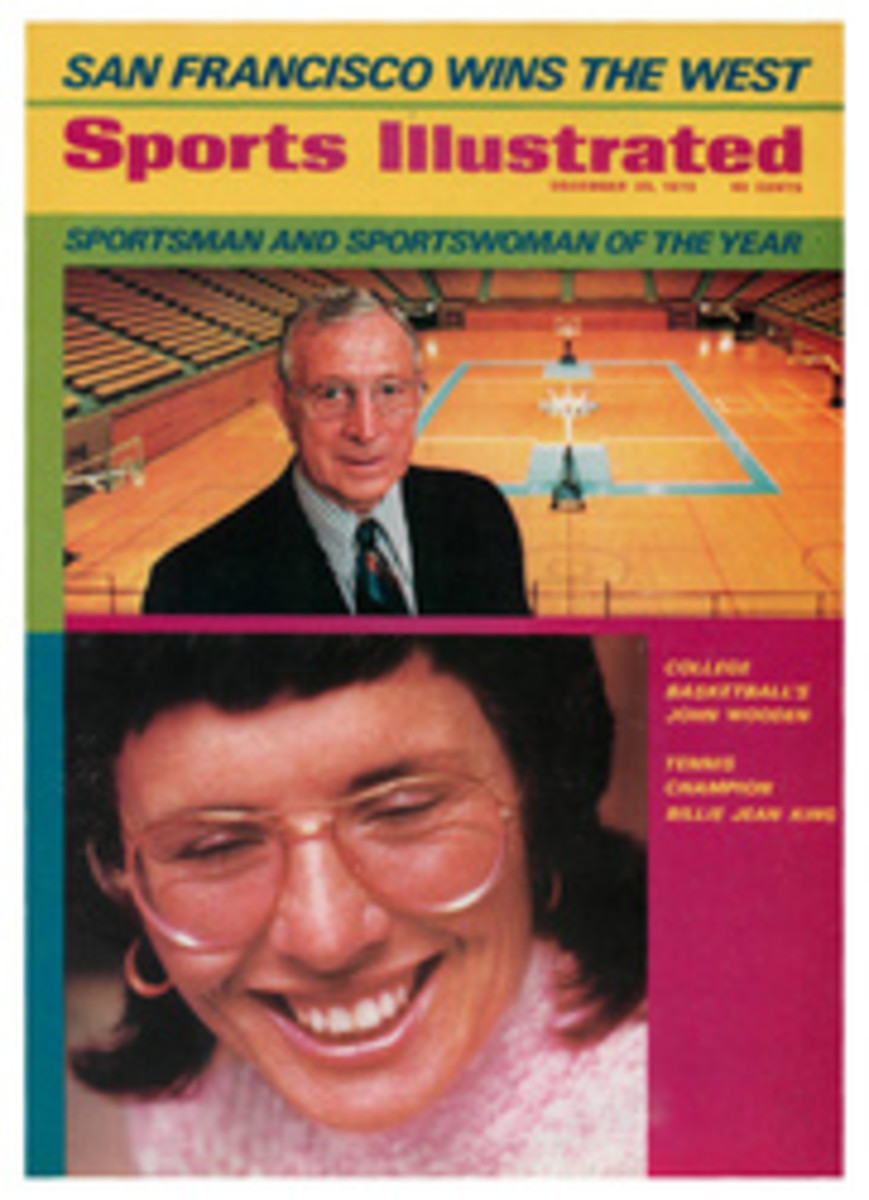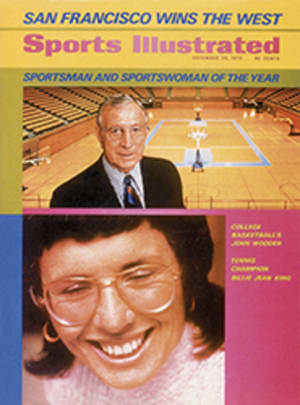
CRY WOLF IN CAROLINA
Big is a hefty little adjective that nonetheless trips lightly off the tongue. What, after all, is really big? Is the Big Ten big? The Big Eight? The Big Apple? The Big Noise from Winnetka?
It is, alas, a question that is merely academic to the sporting bloods of central North Carolina, where basketball is so big even football seems small and where the biggest thing in basketball is the Big Four—North Carolina, North Carolina State, Duke and Wake Forest, those nearly contiguous universities which regard each other warily from distances that are hardly safe.
Proximity alone would necessarily stir rivalry on such proud Southern campuses, but in basketball the four have for years shared a common trait—excellence. A Big Four team has won 17 of the 19 championships in the Atlantic Coast Conference, which now also includes Maryland, Virginia, Clemson and, formerly, South Carolina. And the ACC champion has won the NCAA Eastern Regional championship eight of the last 11 years. Furthermore, it is common knowledge that Big Four games are to ordinary basketball what karate is to Indian wrestling. Take last weekend at the—what else?—Big Four basketball tournament on the supposedly neutral court at Greensboro.
The event is only in its third year, yet it has been embraced by local fanatics as hidebound tradition and, therefore, just cause for hysteria. This year's tournament had several added dimensions. Along with improving Duke and rebuilding Wake Forest under placid Carl Tacy, it would bring together—presumably in the finals—nationally ranked North Carolina and State. The Big Four is big on "eras," and the experts were saying that the Dean Smith era at North Carolina might be interrupted by a State team favored with one and possibly two superstars.
In devouring four mediocre early-season opponents, the State Wolfpack had averaged an astonishing 127 points per game. Its blossoming superstar, a shy, delicate-featured, 6'4" 18-year-old black sophomore named David Thompson, had averaged 33.8 points for his first four varsity games. He was the nation's leading scorer. Thompson, however, had been inspiring superlatives long before he had ever taken a shot for the Pack. It was reported he could jump 42 inches straight up from a standstill, a presumed record for this esoteric event. He was also a deadly shooter, an unbeatable defensive player, a deft ball handler and a jolly good fellow. What's more, he was a bona fide North Carolinian from out Shelby way. After seeing Thompson in action as a freshman, Purdue Coach Fred Schaus called him one of the 10 best basketball players in the nation, pro or college. His own coach, the effusive Norm Sloan, says: "He'll be recognized soon as one of the best who ever played the game."
For good measure, State could offer Center Tommy Burleson, a junior whose program height is listed as 7'4". It is not quite that altitudinous. When Burleson was measured officially at the U.S. Olympic Trials earlier this year he was found to be a mere 7'2½". But at heights like these why pick nits?
Against such colossi, North Carolina would defend its Big Four tournament title with a typical Dean Smith team—quick, cautious, exquisitely drilled and, above all, disciplined. Smith, who is by basketball standards something of a Renaissance man—which is to say, he has other interests, such as books and music—is a firm believer in discipline. "No person who goes with the winds," says he, "is truly free or completely happy." Whatever it is Smith believes in, it works. In 11 years at Chapel Hill his teams have won 217 games and lost only 82. His record against the others of the Big Four since 1966-67 is an overbearing 39-10. Last season the Tar Heels won five separate tournaments in compiling a 29-5 record.
On opening night of this tournament, both of these alleged powerhouses nearly came a cropper. State played abominably in barely holding off an inspired Wake Forest 88-83, and Carolina had its disciplined hands full with Duke before winning 91-86. Thompson played spottily, although he scored 29 points and electrified the crowd—not much of a feat, really—with some showy shot-blocking on defense. Burleson was in foul difficulty early and was scarcely a factor.
Still, the best would meet in the Saturday finals. Except for the partisan few, the crowd of 14,886 politely endured Duke's 80-67 victory over Wake Forest in the consolation match that night. The genuine ear-shattering shrieking began the moment the Carolina and State teams emerged from their dressing chambers.
Apparently both squads were unhinged by the din, for the first half was an opéra bouffe of missed shots, errant passes, lost opportunities, frayed tempers and traveling violations. Two teams that together had averaged 219 points a game scored only 55 in those desultory 20 minutes. Carolina pulled itself together just long enough to gain a 29-26 lead. Tar Heel Bobby Jones, another former Olympian, scored 12, mostly by slipping past Thompson for passes under the basket. Thompson had six points, Burleson four.
The second half was a different matter. Each team began to play its game-Carolina breaking fast, passing wisely and pressing intently on defense; State shooting accurately from outside and locating Burleson inside. Thompson connected on two quick shots, fed for another and seemed less constricted than in the first half. He was smiling now as he hit on jumpers from the corners. And he and Burleson were mercilessly harassing Carolina's inside shooters.
Neither, however, could claim to be the hero of this extraordinary revival. That honor would come to the smallest man on the court, perhaps the smallest on any court outside a junior high school. Monte Towe, like Burleson, has had an inch and a half added to his true height in the game programs. He is listed there as 5'7". Sophomore Towe is only 5'5½". "I didn't think a kid that small could play," said Sloan, "but he's no oddity. He's an athlete." That he is, and it was his superb ball handling that eventually frustrated the tenacious Carolina press.
With 9:01 left to play and the score tied at 49 points, Towe was penalized with his fourth personal foul. Anticipating a summons to the bench, he rushed to Sloan, begging to stay in the game. Impressed with such dedication (a favorite Big Four word), Sloan relented. Towe, to the everlasting gratitude of his teammates, stayed.
His steps dogged by a succession of flailing Carolina guards, little Towe consistently eluded them to control the ball and deliver sharp passes. The Tar Heels simply could not contain the mite except by fouling, and the Wolfpack moved resolutely into the lead. The final five points were scored on free throws—three by Thompson and two by Towe. State had won 68-61.
"I love having the ball when it's close," the little man said afterward. "David and Tommy are superstars, so it has to make you feel good to win like this. It showed we have some other players on the team, too."
Thompson, who finished with 19 points, established that another of his attributes is modesty. "Towe," he said, "is the guy who keeps us together. He's our MVP. He kinda gets to you."
Thompson did prove that he can play well, if not always spectacularly or with the completeness that had been suggested, and he has rare natural gifts. Though he is not yet a superstar, he soon will be, a prospect he accepts with equanimity. State can afford to wait for him. It will not be going to the postseason NCAA tournament this year anyway, since it is on a year's probation for violating rules in recruiting Thompson. So, for similar reasons, is Duke, which, of course, did not even land him. But with Thompson, Burleson and, yes, Towe, State can maintain its high ranking in the national polls. It was, for better or worse, the drama team of last weekend's extravaganza.
Exciting as the tournament was, it remains a wearisome burden for the coaches involved. "This is too early to start playing Big Four games," said North Carolina's Smith last week.
Lord knows, the Big Four see enough of each other. There is the regular home-and-home championship schedule, which leads to no championship at all, then the ACC tournament, which involves all seven conference teams and determines the actual champion, then the possibility of a postseason tournament such as the National Invitational, which could well involve more than one of the Big Four.
By season's end the Four are just a little tired of each other. Besides, knocking themselves off, as they habitually do, does not help any of them climb in the national rankings, where won-loss records count so heavily. As Tacy, whose team was undefeated before its first conference game, said, "Against the ACC clubs we have to play twice as hard just to keep up."
So why an early-season tournament as intramural as this one? Well, how about money? Duke Coach Bucky Waters has his own pet name for this premature shoot-out: "The Budget Bowl." Indeed, each of the four schools is approximately $45,000 richer after the tournament. The crowds in the 15,362-seat Coliseum are always at, near or even above capacity, the tickets go for $7 a copy and the transportation expenses are practically nil since each of the competing schools is only a short bus ride from Greensboro. The Big Four tournament, for all of its bother, is among the most rewarding in the nation.
Meaningless as the tournament may be—the results do not count in ACC standings—it does give the outside world a hint of what to expect from the rugged Big Four and it provides an opportunity for the indigenous zealots to whip themselves into verbal condition for the regular season and the ACC tournament. Although they affect a reasonable manner outside the arena and are as capable of the knowing smile as any New York cabdriver, Big Four rooters are known to be the most insistently vocal in all of basketball.
"Collegiate basketball here is unlike anything anywhere else in the country," says Waters. "The interest is fantastic. You can't hear yourself think. We live with it and once you've been in it nothing else will do. This is the center ring."
Waters, who wears his 37 years well despite the assaults on his senses, is himself an excitable sort. In an effort to eliminate technical fouls he once took to strapping himself to his seat, a practice he abandoned only after learning of a fellow coach being punched out by a 6'9" player during one fierce conference game. "After I heard that," he said, "I felt I wanted to be able to move fast."
Moving fast is a Big Four characteristic. And the swiftest of all would seem to be the young cubs in Sloan's Wolfpack. Maryland may be better, as might be last weekend's tournament victim, North Carolina, but Sloan's team has new confidence.
The significance of the Carolina win may be lost on non-Big Four people, but it certainly was not lost on State's Burleson. Reminded that he will play with a touring all-star team this summer in Russia, the giant pondered this adventure for a moment, then said: "Well, I just hope that old Russian Red gets me as fired up as the Carolina Blue did tonight."
Big Four people talk like that.
PHOTO
JOHN D. HANLON AND LANE STEWART
In a battle of giants, State's Tommy Burleson deftly puts a lid on Carolina's Bobby Jones.
PHOTO
JOHN D. HANLON AND LANE STEWART
Tar Heels' Becky Fuller makes a loud point.
PHOTO
JOHN D. HANLON AND LANE STEWART
Scoring sensation David Thompson hangs in the air to get off a shot over straining Carolina defenders Donn Johnston (left) and Ray Harrison.
PHOTO
JOHN D. HANLON AND LANE STEWART
Mini-guard Monte Towe tries out his wizardry on Jones.
PHOTO
JOHN D. HANLON AND LANE STEWART
Recording the long and short of it, photographers snap at the Wolfpack.

